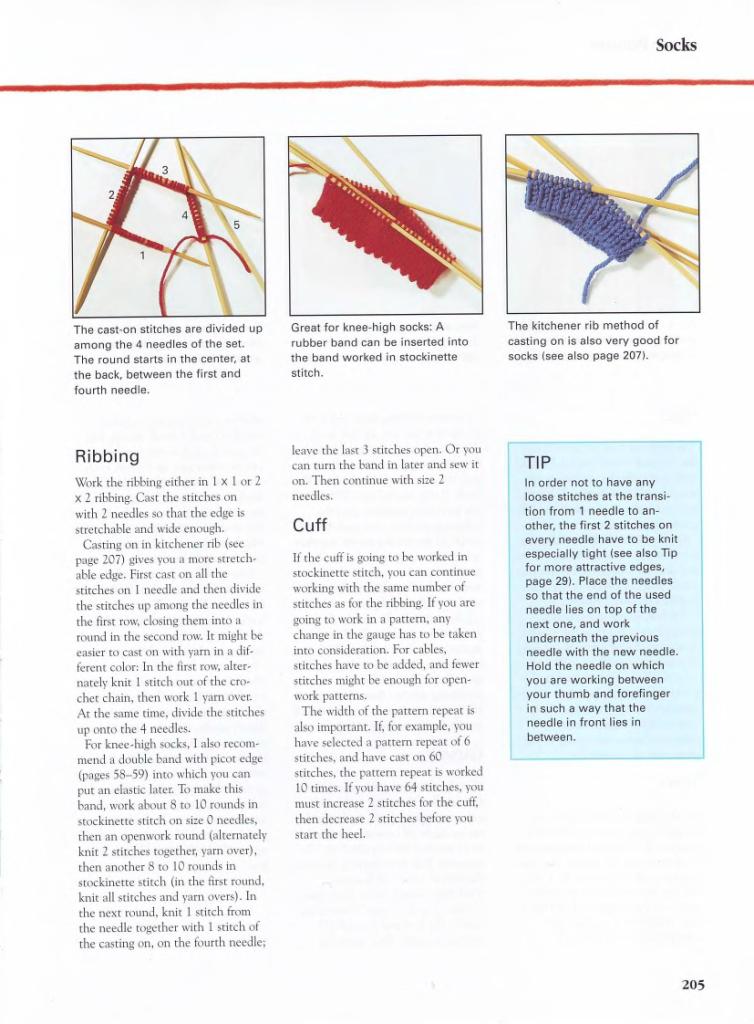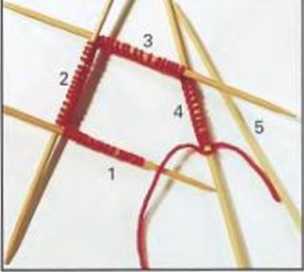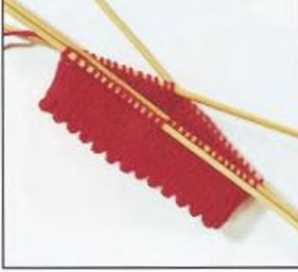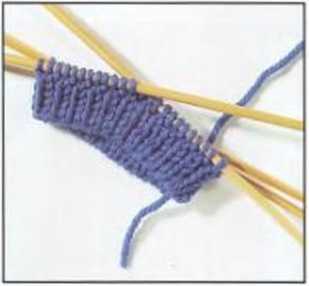206

Socks


Great for knee-high socks: A rubber band can be inserted into the band worked in stockinette stitch.

The kitchener rib method of casting on is also very good for socks (see also page 207).
The caston stitches are divided up among the 4 needles of the set The round starts in the center, at the back. between the first and fourth needle.
Ribbing
Work the ribbing eirher in I x I or 2 x 2 ribbing. Cast the stitches on wich 2 needles so thnr the edge is stretchable and widc enough.
Casting on in kitchener rib {sec page 207) gives you a morę strelch-aNe edge. First cast on all the stitches on 1 needle and then divide the stitches up among the needles in the first row. dosing them intn a round in rhc second row. It might be casier to cast on with yam in a dif-ferent color: In the lirst row. alter-nately knit 1 stitch out of the ero-chet cham, then work 1 yam ovcr.
At the same time. dividc the stitches up orno the -1 needles.
For knee-high socks, I also rccom-mend .i double band with picot edge (pages >8-59) into which you can put an elastte later. To make this band, work about 8 to 10 rounds in stockinettc stitch on si:c 0 needles. then an openwork round (altemately knit 2 stitches together, yam ovcr), then anotherS to 10 rounds in stockinettc stitch U'' the first round, knit all stitches and yam overs). In the next round. knit 1 stitch tfom the needle together with 1 stitch of the casting on, on rhc iourth needle;
lcavc the last I sritches open. Or you can cum the band in later and sew it on. Then conunue with sizc 2 needles.
Cuff
Ił the cuff is going to be worked in stockinettc stitch, you can continuc working with the same numher ot stitches as for the ribbing. If you are going to Work in a patiem, any changę tn the gauge has to be taken into considerarion. For cables, stitches have to be added, and lewer sritches might he enough fnropen-work patterns.
The width of rhe patiem repeat is also important. If, for cxamplc, you have selected a parrem repeat of 6 stitches. and have cast on 60 sritches, the pattern repeat is worked 10 limes. If you havc 64 stitches, you must merease 2 sritches for the cuff. then decrcase 2 stitches beforc you stan the heel.
TIP
In order not to havo any loose stitches at the transi-tion from 1 needle to an-other. the first 2 stitches on every needle have to be knit especially tight (see also Tip for moro attractive edges, page 29). Place the needles so that the end of the used needle lies on top of the next one. and work underneath the previous needle with the now needle. Hołd the needle on which you are working between your thumb and forefinger in such a way that the needle in front lies in between.
205
Wyszukiwarka
Podobne podstrony:
2020Z B3B33ALP Conference rooms Every teacher can create a meeting room for her/his course, where at
2020L B3B33KUI Conference rooms Every teacher can create a meeting room for her/his course, where at
The main disadvantages of using a Computer is that staring at a screen for long periods can be harmf
calibre cover Stuart For dark, triumphant romance...Annę Stuart can t be beaten - New York Times bes
Picture 0 Transportation Units Inline skates Common items such as skates can be transformed into hig
258 259 (10) XIETEOROLOGT FOR MARINERS 258 lcavc thcir sourcc region; others drift out into the open
From the presented data, it can be observed that the celi voltage and efficiency present higher valu
00438 ?c9fcaa370dce722188692ed9c5292e A Graphical Aid for Analyzing Autocorrelated Dynamical System
roses Evervthing is coming up roses with this lovely bon-qnet of tpiilled beauties. Great for piciur
Diora Katalog@ Lecie EN str Śnieżka R-206 This is a basie standard mono radio for AM and FM radi
- 199 -Rotating Target Hołd er . type RTH2R for High Flux Fast Neutron Rad iotherapy - Model 9 To th
1.0 ^-3 100 0.1Materials for Seals POLYMERSl
Lesson@ p214 214 CONYERSATIONAL PORTUGUESE Rather puzzled, he asks him: “Don’t you think you’re as
więcej podobnych podstron